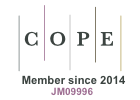Abstract
The mycology of peatlands, with their specific plant communities and numerous rare plant species, has been underexplored and is poorly recognized. The main objectives of this study were to identify the species richness and diversity of macromycetes in raised and transitional bogs of Pomerania and to establish correlations between macroscopic fungi and peatland communities occurring in the area in view of environmental conditions. Investigations spanning a period of ten years were conducted at 134 sites (71 raised and 63 transitional bogs) in eight non-forest peatland communities (Caricetum lasiocarpae, Caricetum limosae, Caricetum rostratae, Eriophoro angustifolii-Sphagnetum recurvi, Rhynchosporetum albae, Erico-Sphagnetum medii, Sphagnetum magellanici, and the Eriophorum vaginatum-Sphagnum fallax community) and two forest communities (Vaccinio uliginosi-Pinetum and Vaccinio uliginosi-Betuletum pubescentis) in which 108 permanent observation plots were established for detailed examinations. A total of 191 macromycete species were recorded in the peatlands. The smallest number of species was recorded in Rhynchosporetum albae (12 species) and Caricetum rostratae (15 species). Phytocoenoses richest in fungi were Vaccinio uliginosi-Pinetum (102 species) and Vaccinio uliginosi-Betuletum pubescentis (121 species). The number of macromycete species recorded in individual peatland communities depends on the community type and is not conditioned by the number of observations and the number and the total area of permanent plots. Five mycosociologico-ecological groups of macroscopic fungi were distinguished based on numerical analyses. Four groups comprise species of fungi associated with a specific phytocoenosis or a group of phytocoenoses. One group consists of fungi with a broader ecological scale. The majority of environmental variables representing the substrate’s chemical properties, humidity and pH show a statistically significant influence on the diversity of macroscopic fungi species in the peatland communities. Cartogram maps of the distribution of 21 species of peatland fungi are included and geographico-ecological features of the species are briefly described.
Keywords
macromycetes; mycocoenoses; distribution; transitional and raised bogs; mires; peatlands; NW Poland






